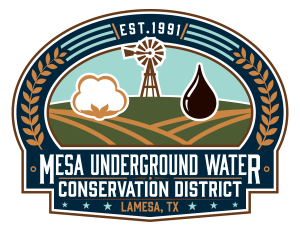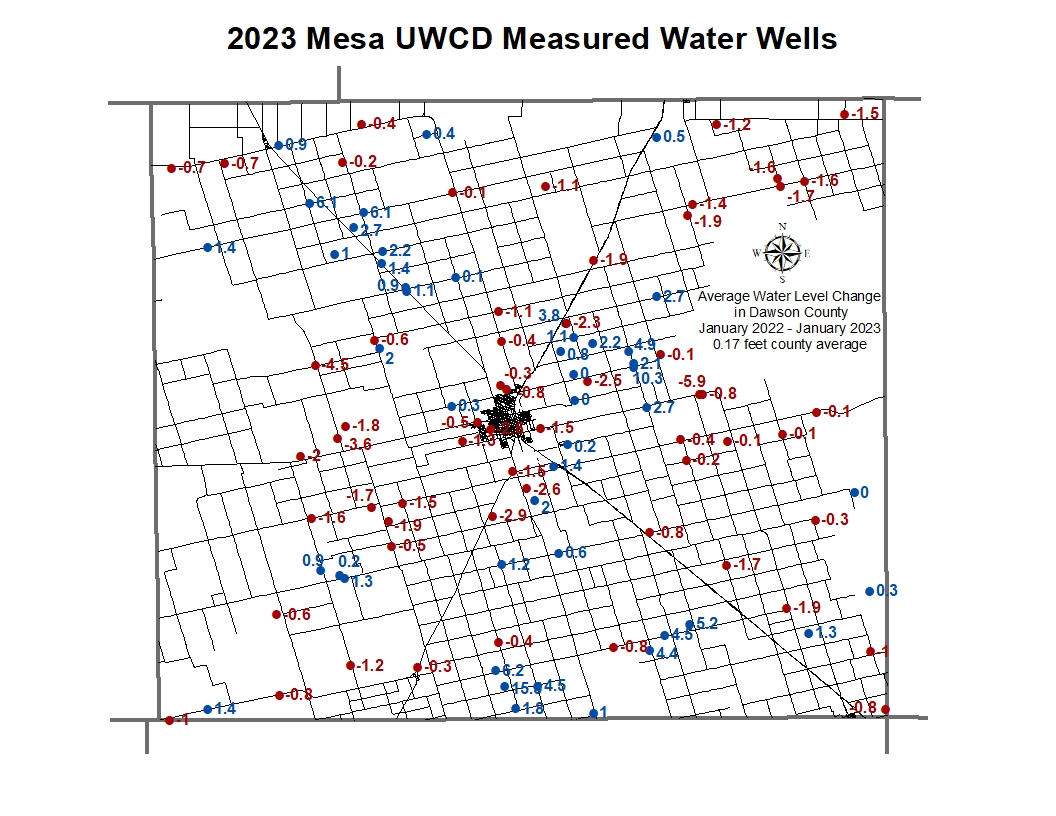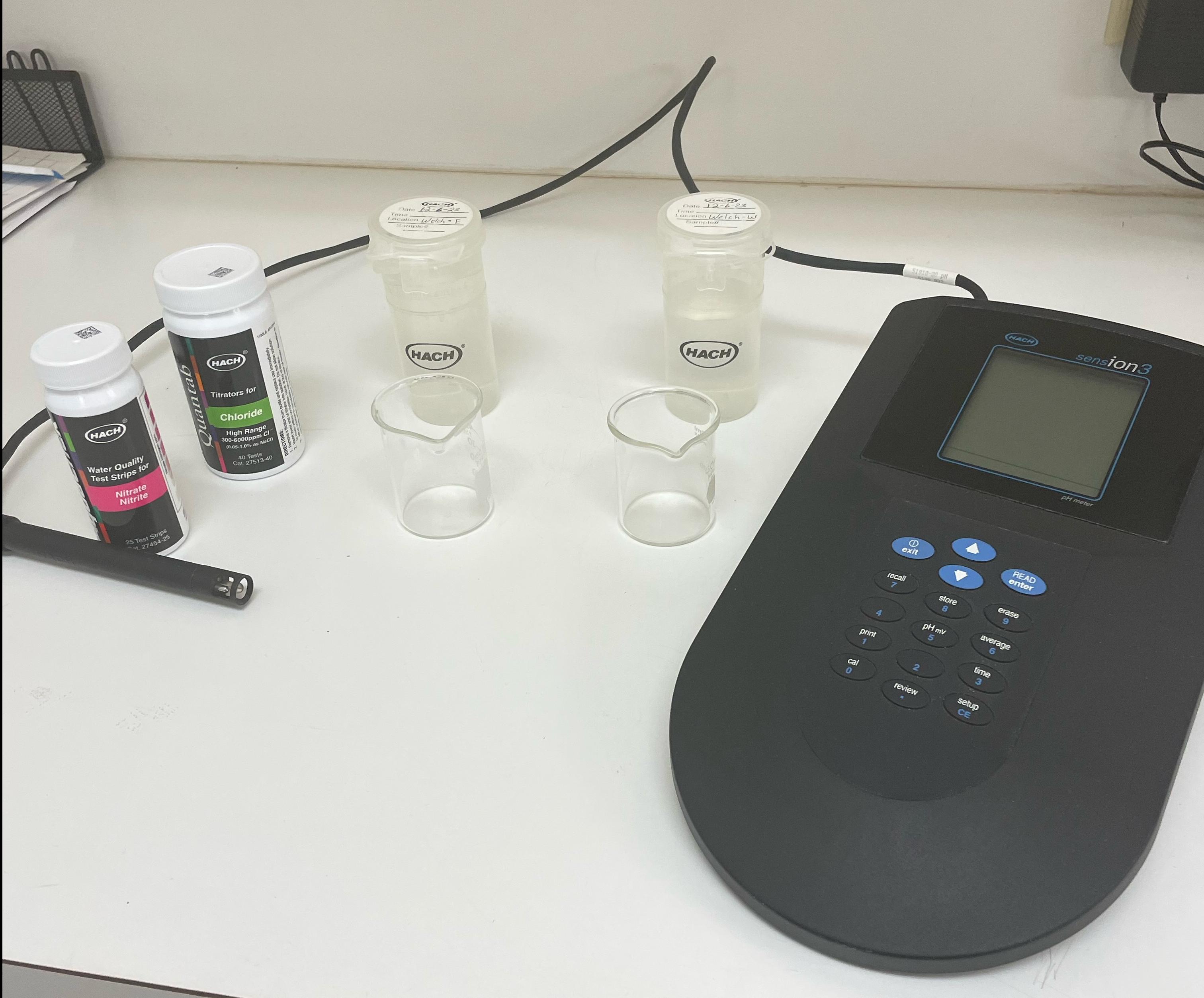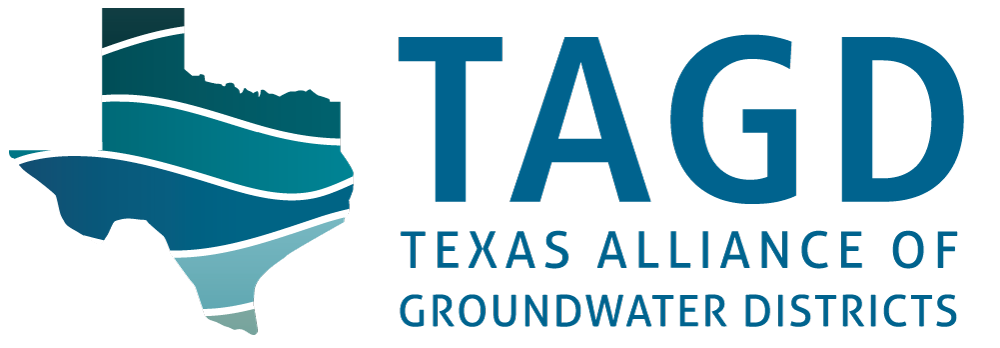Mesa UWCD
Published December 15, 2023 by Julia Stanford
 Like the strong foundation of the Llano Estacado beneath it, Mesa Underground Water Conservation District is a steady, reliable presence in Dawson County. The district was created in 1991 to protect, preserve, and conserve the county’s groundwater resources in the Ogallala and Edwards-Trinity aquifers.
Like the strong foundation of the Llano Estacado beneath it, Mesa Underground Water Conservation District is a steady, reliable presence in Dawson County. The district was created in 1991 to protect, preserve, and conserve the county’s groundwater resources in the Ogallala and Edwards-Trinity aquifers.
Mesa UWCD is located in Lamesa, a community uniquely positioned at a crossroads between bigger cities of Lubbock, Midland, and Big Spring. Lamesa’s ~8,000 residents enjoy a small town feel within an hour’s drive of amenities offered by these larger population centers. The county also marks the northernmost part of the Spraberry Trend, a large oil field that stretches into much of the Permian Basin. While there is some oil drilling activity in the county, sand mining is actually the largest oil and gas-related activity. Six million tons of sand per year can be processed in one mining facility, which is processed into silica grains to be used in hydraulic fracturing operations. The quarry is dry-mined since the sand is above the water table, but water is used extensively in the washing and filtering process. The dominant groundwater use in the district, however, is agriculture with over 500,000 acres of farmland growing cotton, peanuts, hay, and other crops.
Community Involvement
The board and staff of Mesa UWCD are proud to serve as a resource for the community, and center their operations around interacting with stakeholders as much as they can. Three of the five board members are new in the last year, and are continuing to build upon a tradition of proactive, productive communication with the people they serve. All board members are agricultural producers and enjoy being ambassadors for the district among their peers, and representing the needs of the community on the board. General Manager Jacob Hernandez has been at Mesa UWCD since 2017. Before joining the district, he coached football and baseball and taught at Lamesa High School, and has been active in his church. He said his transition to the district was easy since he grew up in a local farming family and he had already established relationships with many people in his previous roles. Jacob values transparent communication and connecting with people, qualities that constituents certainly appreciate from a government regulator.
While much of those connections and communications are made informally, Mesa UWCD also has a broad outreach strategy. The district reaches out to local schools to offer presentations on groundwater resources and the water cycle, and has even hosted some homeschool groups for visits to the district office. In the future, Mesa UWCD hopes to have an educational provider on their team to expand their impact, possibly shared with another water entity as a co-op arrangement (similar to what a few nearby GCDs have established, learn more here). A transparent and accessible digital presence is also important to the district, as they maintain a website with meeting documents, resource links, and more.
Monitoring Programs
A meaningful way that Mesa UWCD interacts with stakeholders is through providing free basic water quality testing for well owners upon request. Although the district has a relatively small budget, it has invested in an in-house lab that can test for total dissolved solids, conductivity, chlorides, bacteria, and salinity. The district conducts around 100 tests annually. This service informs water users about the safety and security of their groundwater resources, and allows the district to monitor water quality at the same time. The district has also partnered with the Texas A&M AgriLife Extension Texas Well Owner Network program in the past to host water quality education seminars in conjunction with well sampling.


In addition to offering water quality monitoring, Mesa UWCD has a robust water level monitoring program that includes 110 wells. This network of monitor wells provides ample coverage throughout the district and allows the district’s hydrologists at RMBJ Geo to accurately assess the health of the aquifers in Dawson County. Each of the monitor wells is measured annually in the spring. Interestingly, analysis of the 2023 measurements shows an average water level increase of 0.17 feet from 2022 – this is great news for this area of the state in the Ogallala Aquifer that is frequently criticized for being “mined” due to low recharge. This is likely due to lower irrigation demands from reduced planting in the 2022 season.
Jacob Hernandez describes Mesa UWCD’s operational strategy as “doing what we can do and doing it to the best of our abilities.” For a single-county district in a rural area, that kind of grit and service-minded attitude will go far and continue to serve the residents of Dawson County as well as their precious groundwater resources. Learn more about Mesa UWCD at www.mesauwcd.org.
